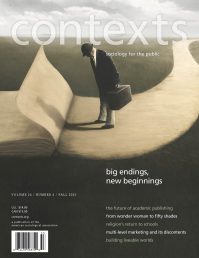Individuals Transforming Criminal Justice
This photo series explores the origins of how misconceptions such as one-dimensional expression and emotional inaccessibility have come to be. I specifically explore the complexity of African American masculinity for young Black boys and Black men.
For the last seven years, I’ve been an educator in inner-city Houston. Before I was an educator, I was a Black boy raised by my grandmother on the north side of Tulsa, Oklahoma. My grandmother raised me, largely because both my mother and father were incarcerated.
Incarceration was normalized in my neighborhood. I can remember one occasion when I was in the third grade; I recall being placed in a “different” classroom setting than my friends. On that same day, I was sent home with a thick envelope for my grandmother. I watched her open the letter and distinctly remember the disgust that slowly came over her face. It led me to believe that I was in trouble for something. I was quiet but eventually worked up enough nerve to ask, “Am I in trouble? I didn’t get into trouble today.” She replied, “No baby, you are good. Don’t worry, this ain’t nothing to do with you.”
The next morning, I was preparing to walk out the door to my elementary school, conveniently only two blocks away from my house. My grandmother stopped me and said, “I’m dropping you off at school this morning. I need to come up there and have a word with the principal.” My grandmother never missed work, so I knew that it must have been something very serious for her to come to the school. I went to my new classroom, and she went to the office to speak with the principal. Forty-five minutes later, the principal and my grandmother came to my new classroom and moved me to yet another classroom.
At the time, I wasn’t aware of why one class was so different than the other. Later, I found out that the school had decided that I belonged in a special education class. What they didn’t count on was my grandmother coming up to the school to challenge and ultimately change that decision abruptly.
This is important because Black boys are more likely than any other group to be placed in special education classes, with 80 percent of all special education students being Black or Hispanic males. Furthermore, the school to prison pipeline starts in special education classrooms where children are misdiagnosed and placed in classrooms that make it okay for teachers to provide very little, if any, challenging instructions. It’s also important to note that labels significantly impact how we view ourselves, another layer that affects self-esteem.
Fast forward to the present day; I have now worked as a special education teacher for more than five years in a predominately Black and brown community. I’ve seen first-hand how white women educators who have very little experience working with children that don’t look like them are provided the opportunity to educate Black and brown students, and in many cases, do so with bias. In fact, 79 percent of public-school teachers are white or non-Hispanic, while only about seven percent of public-school teachers are Black. The cultural gap and the lack of understanding of a community that differs from their own leaves a lot of room for misunderstanding. Misunderstanding can result in mislabeling, and mislabeling can result in a large percentage of Black and brown children being placed in special education.
My first year in education, my principal, who happened to be a Black woman said to me, “Education is where mediocre White women go to be great.” At the time, I didn’t fully understand what she meant. But later, after reflecting on my personal experience as a young boy and leaning on my professional experience as a special education teacher myself, I was finally able to understand exactly what she meant.











Comments 1
Nahrissa Rush
December 10, 2021What a beautiful and touching photo essay that not only highlights the human experience but also calls out the many ways that education and schools can reinforce racial inequalities. Thank you to Brian Ellison for sharing these images and words with the world.